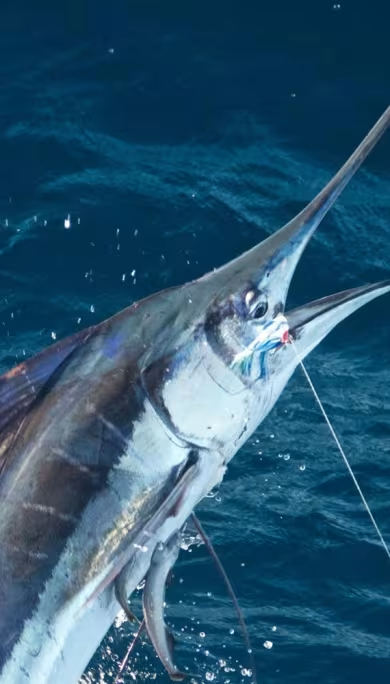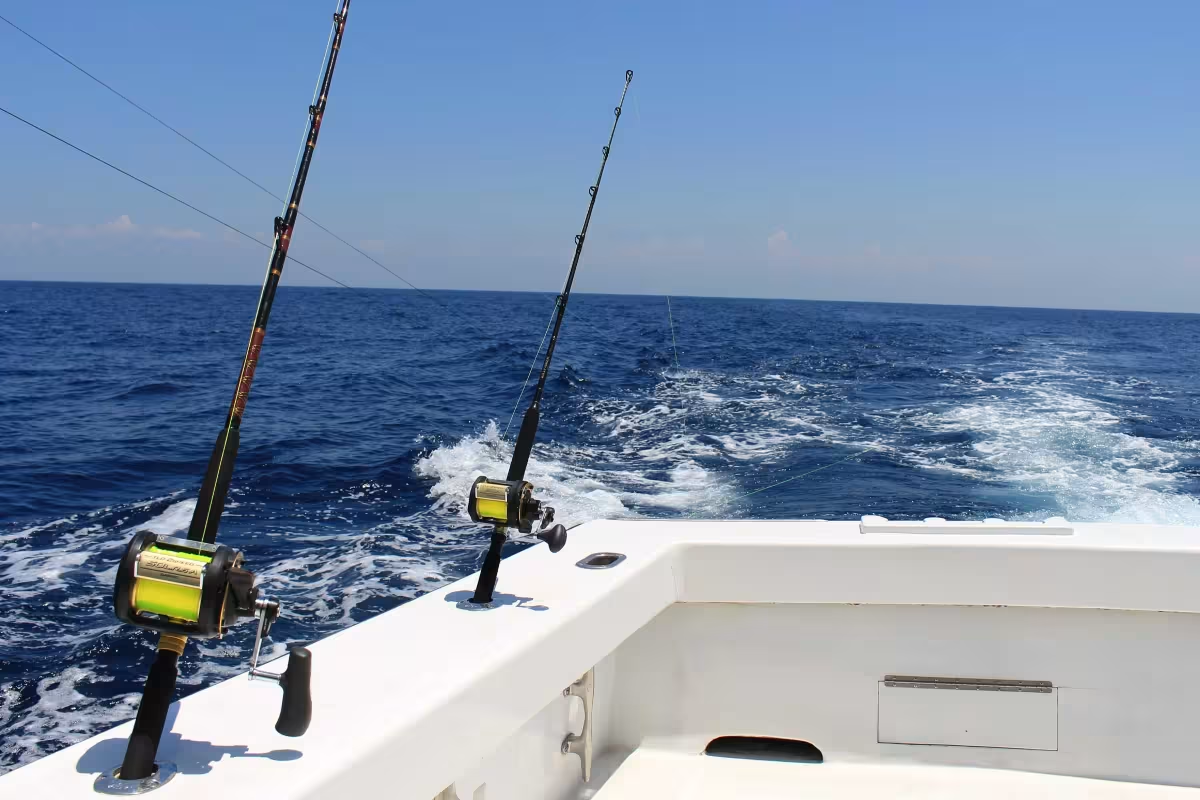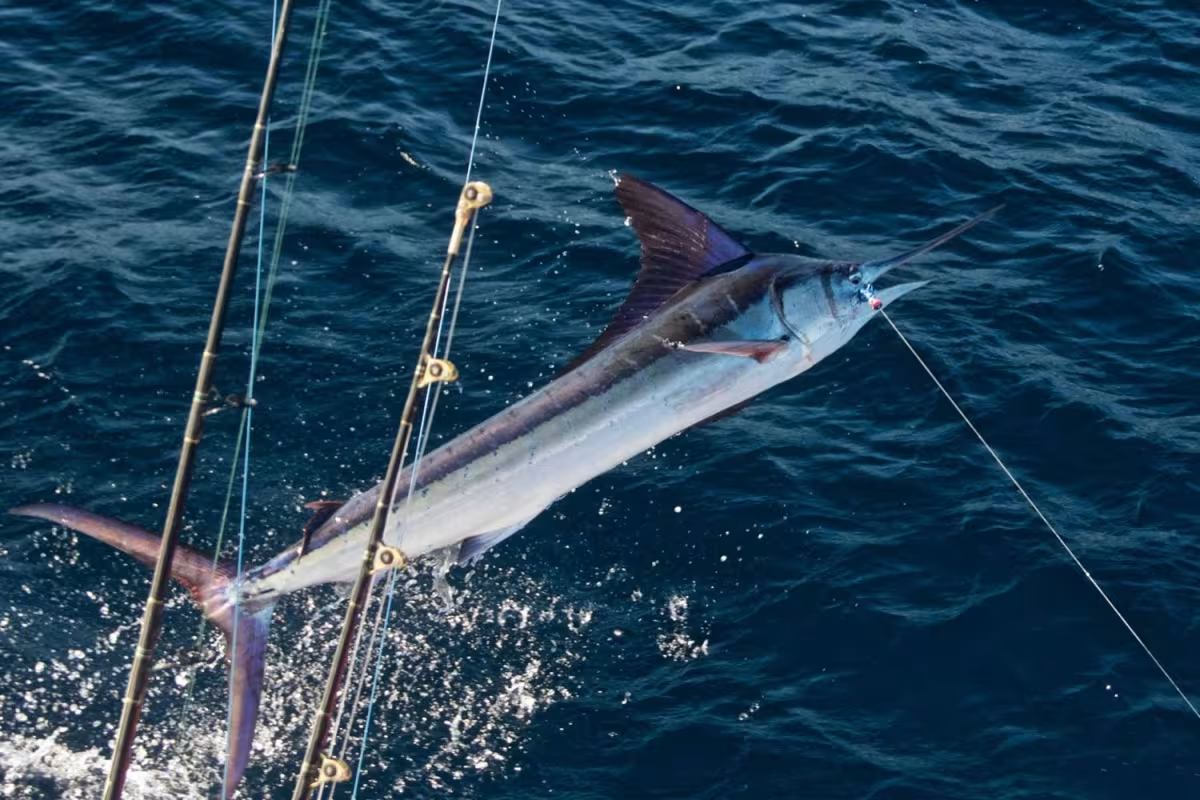Enjoy Fishing in Costa Rica
Fishing in Costa Rica draws anglers from around the world to its rich Pacific and Caribbean waters. Whether you’re a seasoned pro or a first-time fisherman, the country offers inshore, offshore, and freshwater adventures targeting species like marlin, sailfish, roosterfish, dorado, tuna, and snapper. Guided charters provide top-notch boats, gear, and local expertise, blending the thrill of the catch with Costa Rica’s exciting marine life. With year-round opportunities and peak seasons varying by species, it’s a premier destination for every kind of angler.
Why Fish in Costa Rica
Costa Rica’s waters teem with legendary fish, from acrobatic sailfish to hard-fighting roosterfish. The Pacific and Caribbean coasts offer a range of fishing grounds, where you can spot dolphins, whales, or sea turtles between casts. Inshore trips target species near reefs or river mouths, while offshore ventures chase big game in deeper waters. Freshwater fishing in Costa Rica's lakes and rivers adds another layer with aggressive species like rainbow bass. Charters cater to all skill levels, making it easy to jump in, whether you’re after a trophy fish or a relaxed day on the water.
What to Expect on a Fishing Trip
Fishing tours typically run as half-day or full-day charters, with boats equipped for comfort and success. Expect modern gear, bait, drinks, and snacks or lunch, plus experienced crews who know the best spots. Inshore trips, lasting four-to-six hours, stay close to shore and suit families or those prone to seasickness. Offshore charters, often eight hours or more, head to deeper waters for bigger fish and require larger vessels. Freshwater tours, around four-to-six hours, focus on lakes or rivers. Wear comfortable clothing, sunscreen, and a hat, and bring a light jacket for early mornings. Catch-and-release is encouraged for billfish and sensitive species to support conservation.
Where to Go
Costa Rica’s fishing spots cater to different styles and species. Jacó and Los Sueños Marina Resort are top picks for year-round action, offering inshore and offshore trips for roosterfish, snapper, marlin, and sailfish, plus upscale lodging nearby. Quepos and Manuel Antonio, home to Pez Vela Marina, provide coastal, deep-sea, sail, and fly fishing, with a range of species from dorado to tuna. Guanacaste’s Tamarindo, Flamingo, and Gulf of Papagayo deliver inshore and offshore adventures, with the continental shelf just 40 minutes from shore for quick access to big game. The Osa Peninsula, including Drake Bay and Puerto Jimenez, is a remote hotspot for roosterfish and offshore giants. On the Caribbean, Tortuguero and Rio Parismina excel for tarpon and snook. Lake Arenal in La Fortuna offers freshwater fishing for rainbow bass with a volcano backdrop.
When to Go
Fishing is productive year-round, but peaks depend on species and region. On the Pacific, sailfish and marlin are best in November, December, January, February, and March, while dorado and tuna peak in August, September, October, and November. Roosterfish and snapper are reliable year-round. The Caribbean sees tarpon and snook strongest in September, October, and November. Freshwater fishing, like at Lake Arenal, shines in January, February, March, April, and May during the dry season. Tour schedules align with these peaks to maximize your catch.
FAQs about Fishing in Costa Rica
Which fish can I catch in Costa Rica?
You can target marlin, sailfish, dorado, yellowfin tuna, roosterfish, snapper, snook, tarpon, and rainbow bass, among others, depending on the coast and season.
Where are the best fishing spots?
Top spots include Los Sueños, Quepos, Tamarindo, Flamingo, Gulf of Papagayo, the Osa Peninsula, Tortuguero, Rio Parismina, and Lake Arenal.
When is the best time to fish?
Fishing works year-round. Sailfish and marlin peak in November, December, January, February, and March, dorado and tuna in August, September, October, and November, and freshwater species in January, February, March, April, and May.
What’s the difference between inshore and offshore fishing?
Inshore fishing stays close to shore, targeting roosterfish, snapper, and snook in calmer waters. Offshore fishing ventures deeper for big game like marlin, sailfish, and tuna, often requiring a full day.
What should I bring on a fishing tour?
Wear comfortable clothes, sunscreen, and a hat. Bring a light jacket for early mornings. Charters provide gear, bait, drinks, and food, but a small bag for personal items is handy.










